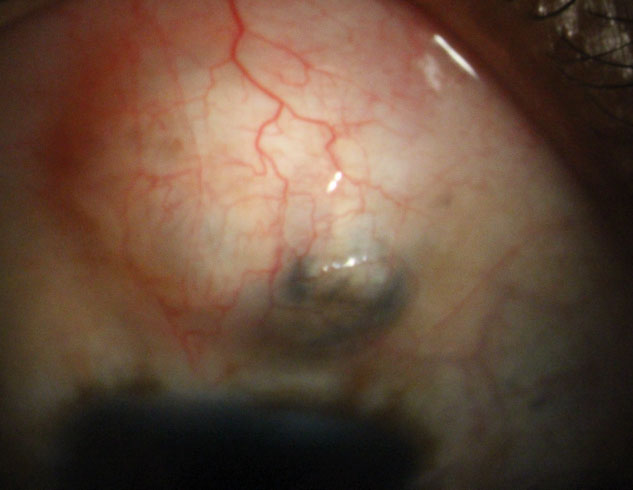 |
|
Male sex and older age were associated with an increased likelihood of incisional glaucoma surgery in this recent study. Photo: Justin Schweitzer, OD. Click image to enlarge. |
A team of researchers at UCLA believe that the high number of people with undiagnosed or untreated glaucoma raises concerns about vision monitoring and preventative treatment since a lack of disease monitoring and treatment can ultimately lead to an increased risk of blindness due to disease progression. Using data from the National Institutes of Health (NIH) All of Us Research Program, their recent study examined associations between access to eye care providers, severity of glaucoma and likelihood of incisional glaucoma surgery, while controlling for demographic and social factors. They found that those with access to an eye care provider had higher adjusted odds of all levels of glaucoma severity, the highest adjusted odds were among those with a diagnosis of severe glaucoma. This may be because individuals with advanced stages of the disease require more procedures and eye care resources and have shorter recommended follow-up times due to the severity of their disease.
The NIH All of Us Research Program is a large-scale initiative that collects medical, demographic and socioeconomic information from individuals across the United States and provides researchers with the opportunity to comprehensively examine factors associated with access to medical care. Of these 83,147 individuals who answered the survey question regarding eye care access and were included in the study population, 65.2% reported that they had seen an eye care provider in the past 12 months, and 3,395 (4.1%) individuals had at least one ICD-9 or ICD-10 claim for glaucoma. Among the 3,395 individuals with glaucoma, 5.51% had mild glaucoma, 5.01% had moderate glaucoma, 2.83% had severe glaucoma and 86.66% had unspecified glaucoma.
Individuals with access to an eye care provider in the past 12 months had a greater likelihood of all levels of glaucoma severity after adjusting for race and ethnicity, age, and sex assigned at birth. Compared to individuals without access to eye care services, those with access were more likely to have all levels of glaucoma severity (mild adjusted odds ratio [aOR]: 5.81, moderate aOR: 4.44, severe aOR: 6.95 and unspecified aOR: 3.06, respectively). Access to eye care was associated with increased odds of any incisional glaucoma surgery (aOR: 3.00) and of trabeculectomy (aOR: 3.30) but not of tube shunt procedures (aOR: 2.65).
A greater percentage of individuals who reported higher levels of household income reported accessing eye care services; similarly, there was a higher frequency of access to eye care services among those who completed higher levels of education than those who completed less than high school. Finally, a higher number of respondents with better health literacy accessed eye care services than those with poor health literacy. Of note, the researchers found no association between race and ethnicity and the likelihood of incisional glaucoma surgery.
“There is a need to understand whether the association between increased eye care access and increased occurrence of glaucoma surgery represents delayed presentation to care in individuals with glaucoma who can access eye care,” the authors wrote in their paper, which was published in Journal of Glaucoma.
“Our study is an important step in revealing that those without access to eye care may be at risk of missed glaucoma diagnoses and thus a lack of treatment,” they added. “However, future studies are needed to determine the key reasons behind these access issues, such as an inability to afford medications and/or appointment copays, insurance coverage issues, glaucoma education and awareness and appointment wait times, among others.”
“These findings can help to encourage all individuals to seek timely eye care and potentially create targeted interventions to increase access for certain groups at high risk of glaucomatous vision loss,” the study concluded.
Paul M, Kitayama K, Yu F, et al. Access to eye care providers and glaucoma severity in the National Institutes of Health All of Us Research Program. J Glaucoma. October 17, 2023. [Epub ahead of print]. |

